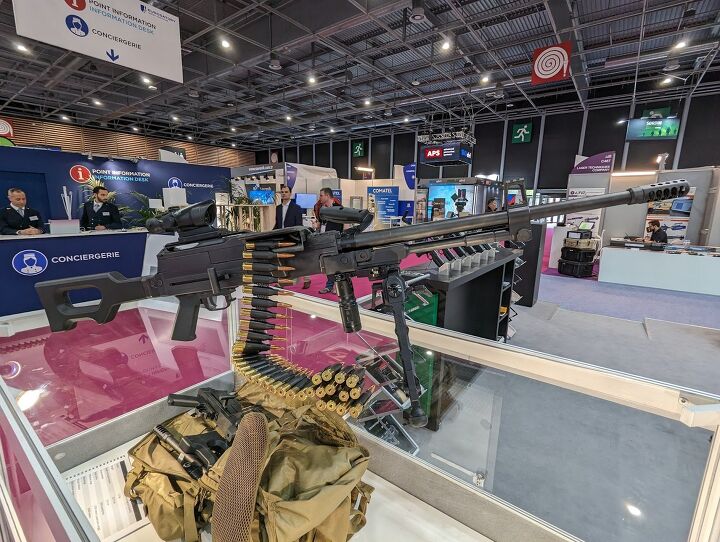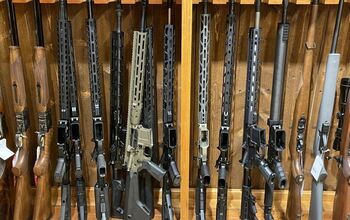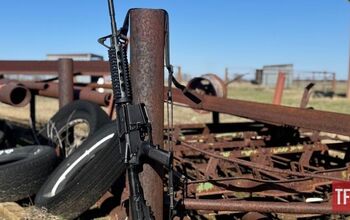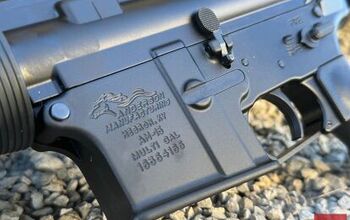The Big PK - The FK BRNO BKS 338 Machine Gun

The .338 Norma Magnum has been a prominent topic for bridging capability gaps in military applications for over a decade. Domestic and international defense contractors actively seek to enhance overmatch and increase lethality while reducing the weight to get a larger caliber in the fight. One notable company in this arena is FK BRNO, a Czech defense firm specializing in designing and manufacturing firearms. FK BRNO recently developed the BKS .338 medium machine gun, unveiled at the Eurosatory 2024 defense exhibition. It was an unexpected development since this was the company's first machine gun design.
The .338 caliber machine gun has gained increased interest from the U.S. military due to the superior velocity and kinetic energy provided by the .338 Norma Magnum cartridge. The main goal of the U.S.-led .338 caliber machine gun program is to counter the PKM, which has an effective range with a rear sight graduated up to 1,500 meters. However, the PKM can shoot that far, and so does the M240, but typically, the PKM is used at ranges of no more than 600 meters, serving primarily as the squad's automatic weapon.
Recent developments in Russia, such as the PKP-SP and PKP-M machine guns, feature rear sights that are graduated to 600 meters. The .338 caliber machine gun is designed as a lighter alternative to the M2 Browning machine gun, providing a caliber advantage on the battlefield for gun teams. While one person can operate the BKS, it will be best utilized as part of a weapon squad to leverage its capabilities fully.
The Gun
The BKS is a PK-inspired, gas-operated, belt-fed, air-cooled, select-fire machine gun chambered for the .338 Norma Magnum (8.6×63 mm) cartridge. The weapon system weighs 24.2 lbs. (11 kg) and measures 50 inches (1,275 mm) in length. The BKS has a very controllable rate of fire of 550 rounds per minute, an effective range of 1,700 meters, and a maximum ballistic range of 6,500 meters. The .338 Norma Magnum goes transonic at around 1,700 meters, depending on various environmental factors. The available data does not explicitly state specific details regarding the barrel length or twist rate itself.
The BKS features a two-stage feed system based on the PK design. This design helps reduce the weapon's weight using a shorter receiver than a push belt system. The system operates by delinking the cartridge from the belt with a cartridge grabber, which then allows the cartridge to drop into an intermediate position until the sear falls. At that point, the bolt engages and chambers the cartridge.
FK BRNO opted for the PK design because it offers a proven, mechanically reliable, and well-tested operating system. The receiver and feed cover are machine-forged steel, and the quick-change barrel feature from the PK design has been retained. The carrying handle’s camming action, which is used to dislodge a stuck barrel, has also been preserved.
The weapon utilizes a non-disintegrating metal belt for ammunition, typical of the PK system. Notably, the recoil is reported to be relatively mild for a .338 caliber firearm, comparable to that of a 7.62x51 recoil, likely due to its buffer assembly and the large, overly effective muzzle device. The Soviets experimented with this type of system in PKs after capturing the M-60s during the Vietnam War, but they deemed it unnecessary for the PKM in 7.62x54. The barrel features a PKT-style three-position gas regulator. With the stock removed, I couldn't see any buffer system. But the stock connects to a boot with a lip and a locking pin.
An M1913 Picatinny rail is integrated into the feed tray cover for mounting optics, while backup iron sights are installed on the feed tray cover and the combination front sight gas block using the M1913 rail. Additionally, a section of the M1913 rail is milled into the bottom of the front part of the receiver to allow for the attachment of a bipod to the weapon.
The BKS is designed with the standard PK-style tripod mounting points, indicating its compatibility with the Stepanov tripod. However, this tripod has several shortcomings, especially for a system intended to extend ranges. I presume that the company is aware of these issues and likely has a solution in mind.
The 338 NM caliber fills the gap between the 7.62x51mm and the .50BMG/12.7x99mm calibers, providing an overmatch capability to counter the 7.62x54 PKM weapon system while being lighter than a US M240. It also offers a compelling range, such as the M2 Browning Heavy Machine Gun. The BKS system allows users to achieve the performance of a 12.7x99 caliber weapon in a one-man portable package. Additionally, the BKS 338 effectively doubles the kinetic energy of the PKM.
The company has mentioned that a European country has shown interest in the BKS, and FK Brno is open to potential future licensing agreements for the design. However, no further details have been released yet. When I reached out for comment, I did not receive a response.
The BKS showcases its heritage from the PK machine gun, which is renowned for its reliability and effective operating system. While limited information about this weapon system is available, it has particularly impressed me. I closely follow developments related to the PK and would love the opportunity to examine and test one.
The BKS retains a two-stage feed system, which helps reduce weight by allowing for a shorter receiver. Additionally, this design enables the use of polymer disintegrating links with a closed-loop design, further contributing to weight reduction. The BKS would be an excellent option for countries still using the PKM, such as Finland, Poland, and Serbia.
Conclusion
Once the US finalizes its .338 NM MMG, this trend reflects military procurement strategies aimed at acquiring advanced weapon systems that enhance operational effectiveness. The BKS 338 provides the advantage of improved performance in a lightweight package—the military's requirement for extended shooting distances or capabilities for closer engagements with increased kinetic energy.
Specs:
- Caliber: 338 Norma Magnum (8.6x63)
- Weight: 24.2 LBS. (11 kg)
- Length: 127.5 cm
- Disassembled: 30 inches (76.2 cm)
- Rate of Fire: 550 rounds/min
- Effective range: 1700 meters
- Max Range: 6500 meters
- Muzzle Velocity: 2723 fps (830 m/s)

Lynndon Schooler is an open-source weapons intelligence professional with a background as an infantryman in the US Army. His experience includes working as a gunsmith and production manager in firearm manufacturing, as well as serving as an armorer, consultant, and instructor in nonstandard weapons. His articles have been published in Small Arms Review and the Small Arms Defence Journal. https://www.instagram.com/lynndons
More by Lynndon Schooler













![[SHOT 2025] PTR-63 And The New Vent Spiritus 5.56i Silencer](https://cdn-fastly.thefirearmblog.com/media/2025/01/28/23466/shot-2025-ptr-63-and-the-new-vent-spiritus-5-56i-silencer.jpg?size=350x220)









![[SHOT 2025] PSA New Releases & Concept Guns](https://cdn-fastly.thefirearmblog.com/media/2025/02/01/01551/shot-2025-psa-new-releases-concept-guns.jpg?size=350x220)



Comments
Join the conversation
I don’t think muzzle brakes should be on MGs. Maybe the first image is a prototype only?